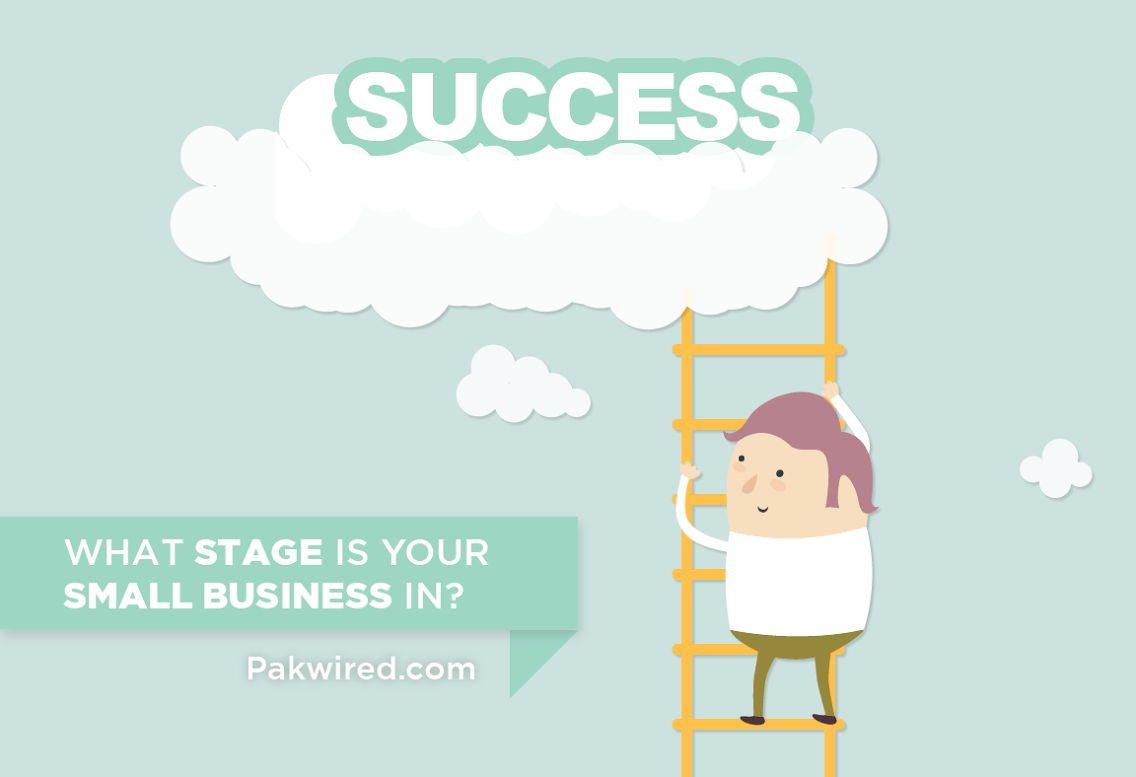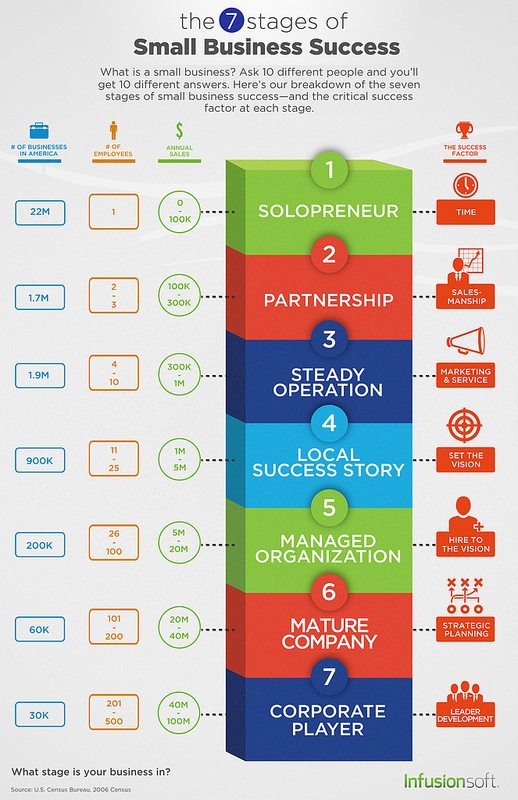If you ever feel like there’s loads to do and no obvious starting line, the model below may help you determine where to place the most focus. Using Infusionsoft’s model for small business success, one can better conceptualize where their business stands in the spectrum of progress. The model depicts the typical number of employees, success factors, and annual sales for each stage.
Solopreneur
Work can quickly become overwhelming for solopreneurs since they are in charge of their entire business with little outside aid. Thus, it’s important for solopreneurs to think ahead and not get bogged down in menial tasks that won’t promote growth. Solopreneurs should ask themselves questions like, “Where do I want to be in 2 years?” or “How can I improve upon my revenue streams?” Maintaining a vision and a set of achievable goals, even if vague, will help you stay on course. Most importantly, don’t have a “set it and forget it” mentality. Check back on these goals, reread your vision, and check off things that you’ve already accomplished.
Also, keep in mind that solopreneur doesn’t have to mean completely and utterly solo. You can outsource certain jobs that are not in your field of expertise, like bookkeeping. The crucial success factor for solopreneurs is time – particularly, smart time management skills.
Partnership
Business partnerships require solid communication from all parties involved. Partners must outline and agree upon exactly what is expected of each of them so there are no surprises. The upside is that partnerships are often simple and inexpensive to create. However, one thing to keep in mind is that if a partnership is dissolved, one’s personal assets may be at risk. It’s essential to have a partnership agreement in writing, no matter how unnecessary it may seem. According to the model, the primary success factor in a partnership is salesmanship. This involves not only persistence and efficiency, but quality customer service and honesty.
Steady Operation
Slightly larger than a business at the partnership level is a steady operation. The success of a steady operation is dependent on marketing and services. Businesses at this stage will want to focus pretty heavily on the quality and quantity of their marketing. How many different outlets are being used? Which outlets are working and how can the other outlets be improved? Businesses will want to determine their strongest marketing avenue and continuously use it/reinvent it.
Local Success Story
Local businesses have to maintain a level of creativity to stay competitive with larger entities. Sometimes, the story a local business tells is just as impactful as their actual products and services.
So how does a local business go about defining its vision? Much like solopreneurs, a business that wants to be a local success story must be future-oriented. They must bring vague, lofty aspirations down to actionable steps. For example, opening an additional location requires a specific course of action. Local business owners must be aware of this, and ready to change course if they fall off-track from their visionary objectives.
Managed Organization
Lately, there’s been substantial talk about self-managing organizations, or organizations that discourage rigid boss-employee relations and instead encourage personal responsibility. The success factor here is not simply to develop a vision, but to “hire to the vision.” This meshes seamlessly with the idea of self-managing organizations, which encourage careful hiring for cultural fit. If the values and vision don’t resonate with each employee, the organization is weakened by inconsistency. Hiring to the vision means holding more in-depth interviews in which candidates really have the opportunity to show a bit of their personalities and attitudes.
Mature Company
Mature companies often have sophisticated models, strong customer loyalty, and reputable branding. The official definition of a mature company is a company whose shrinkage and growth are predominantly in line with the larger economy. The success factor? Strategic planning. This could be one or several plans, depending on how many areas are in need of improvement. It’s wise for mature companies to plan in areas like customer retention, product development and improvement, and marketing – just to name a few.
Corporate Player
At this stage, profits soar to over 40M and employees are numbered at over 200 on average. Corporate players must discover and train competent leaders that can manage the company’s vast operational systems. Strong corporate leaders will be innovative, driven, and socially intelligent.



